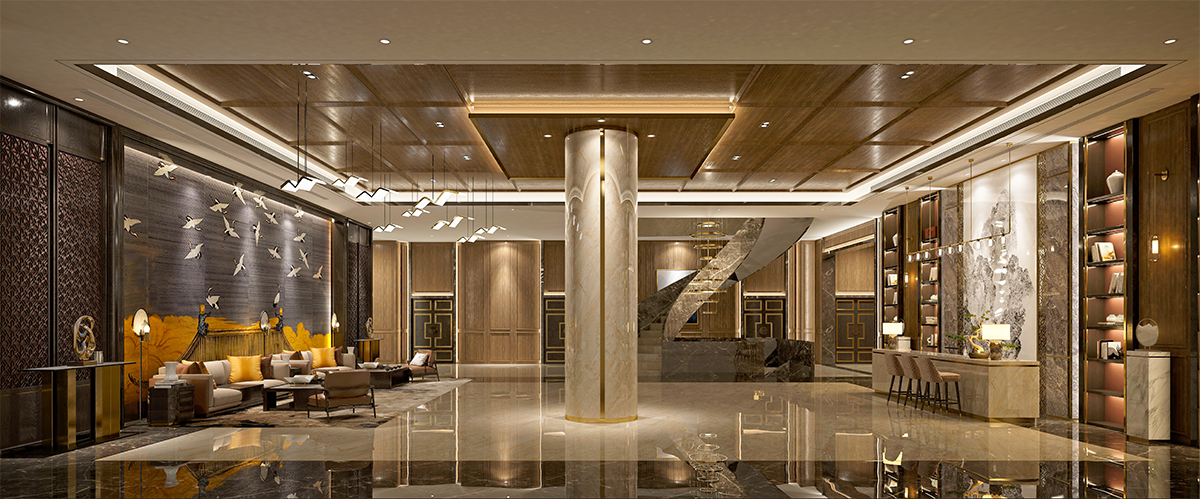
Cove lighting is installed in ledges, recesses, or valances in ceilings or high on walls to provide ambient illumination and create a soft, diffused glow. Instead of shining light directly into the space, cove lighting is designed to direct light both upward towards the ceiling and downward along the adjacent walls. This creates a soft, indirect illumination that can serve various purposes. Cove lighting serves as an essential and versatile component in architectural lighting, contributing to the aesthetic appeal, functionality, and overall experience of a space by highlighting architectural details, creating ambiance, and offering design flexibility. It is instrumental in achieving a balance between form and function in architectural design. Cove lighting seamlessly integrates into architectural elements, becoming an integral part of the design rather than a standalone feature. This integration contributes to a cohesive and harmonious aesthetic, aligning the lighting with the overall architectural vision. This concealed light source allows for a more even and gentle distribution of light, enhancing the overall visual appeal of the architecture without drawing attention to the light fixtures themselves. Cove lighting can be employed for various lighting techniques, such as uplighting, downlighting, or wall washing.
Cove lighting is often used to accentuate and highlight specific architectural features of a space, such as moldings, cornices, or structural elements. Well-executed cove lighting can add a touch of elegance and charm to a space. It has the potential to enhance the overall aesthetic. By strategically placing lights in concealed ledges or recesses (coves), designers can draw attention to these details, adding depth and visual interest to the overall design. These hidden locations for the light fixtures allow for indirect lighting that doesn't draw attention to the fixtures themselves but rather focuses on the illuminated architectural elements. By casting light on specific features from concealed positions, it creates shadows and highlights, giving a three-dimensional quality to the architecture. By directing light upwards, it can accentuate architectural details, textures, or designs on the ceiling, adding a layer of sophistication and visual interest to the room.
Cove lighting is effective in setting the mood and ambiance of a space. The indirect illumination it provides can contribute to a soft and diffused lighting effect, creating a warm and inviting atmosphere. This is particularly important in architectural spaces where aesthetics and mood are key considerations. Cove lighting is part of the ambient layer, which serves as the foundational layer of illumination in a space, providing general, uniform lighting that allows people to move and see comfortably. Cove lighting contributes to this ambient layer by distributing light evenly across surfaces. The ambient light layer is crucial for setting the overall atmosphere of a room. The choice of cove lighting, whether it illuminates the walls or the ceiling, can significantly influence the perceived ambiance of the space. When cove lighting is used to illuminate the walls from a concealed position at the edge of the ceiling, it creates a warm and intimate atmosphere. This approach can make the room feel more spacious and inviting, emphasizing the vertical surfaces and contributing to a cozy environment. Conversely, when the ceiling is lit from a cove at the top of a wall, it imparts a cooler, quieter, and more formal feel to the room. This method of cove lighting directs attention upward, creating a different visual impact that suits spaces where a more restrained or formal atmosphere is desired.
LED technology has become firmly entrenched and widely adopted within the field of cove lighting. It allows for more creative, efficient, and sustainable cove lighting solutions that enhance the visual and functional aspects of architectural spaces. The small size of LEDs enhances the adaptability of cove lighting to different architectural spaces. The directionality of LEDs allows for precise control over light. LED technology is known for its ability to offer a diverse and extensive range of color options. LED cove lights can be designed to emit warm, neutral, or cool white light, providing flexibility in achieving different atmospheres and moods. Some LED cove lighting systems offer tunable white light, allowing users to adjust the color temperature of the light to simulate different times of the day. This feature is particularly useful in applications where circadian lighting effects are desired. RGB LED lights can generate a wide spectrum of colors by adjusting the intensity of each of these primary colors. LED cove lights using digital addressable LED technology can be programmed to produce dynamic lighting effects, which opens up new possibilities for visually engaging and interactive environments. With the rise of smart lighting systems, cove lighting can be integrated into smart home or building automation systems. This integration enables users to control cove lighting remotely, set schedules, and even synchronize lighting with other smart devices, contributing to a more connected and intelligent lighting environment.
When implementing cove lighting, various types of LED lights can be used, including dedicated cove light fixtures designed specifically for this purpose. LED linear fixtures offer a modern and structured appearance, often used for well-defined cove lighting in architectural spaces. LED strip lights are generally cost-effective, offering a good balance between performance and affordability. This makes them a popular choice for cove lighting projects with budget considerations. COB LED strip lights provide uniform illumination along their length, ensuring a consistent and even light output. The use of LED neon flex in cove lighting allows for unique and eye-catching designs. Its flexibility, uniform illumination, color options, and durability make it a popular choice for designers looking to achieve a distinctive and modern aesthetic in architectural lighting applications.











































